-
Drought causing California’s San Joaquin Valley land to sink, damaging infrastructure
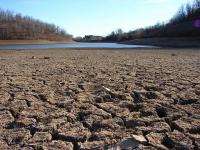
Californians continue pumping groundwater in response to the historic drought, and as a result, land in the San Joaquin Valley is sinking faster than ever before, nearly two inches per month in some locations. Sinking land, known as subsidence, has been occurring for decades in California because of excessive groundwater pumping during drought conditions, but the sinking is happening faster. The increased subsidence rates can damage local, state, and federal infrastructure, including aqueducts, bridges, roads, and flood control structures. Long-term subsidence has already destroyed thousands of public and private groundwater well casings in the San Joaquin Valley. Over time, subsidence can permanently reduce the underground aquifer’s water storage capacity.
-
-
Warming climate exacerbating California drought
A new study says that global warming has measurably worsened the ongoing California drought. Scientists largely agree that natural weather variations have caused a lack of rain, but an emerging consensus says that rising temperatures may be making things worse by driving moisture from plants and soil into the air. The new study is the first to estimate how much worse: as much as a quarter. The findings suggest that within a few decades, continually increasing temperatures and resulting moisture losses will push California into even more persistent aridity.
-
-
U.S. coastal flood risk on the rise ten years after Hurricane Katrina
A decade after Hurricane Katrina caused $41 billion in property and casualty insurance losses, the most expensive catastrophe ever experienced by the global insurance industry, rising sea levels are driving up expected economic and insurance losses from hurricane-driven storm surge in coastal cities across the United States. Rising sea levels contributing to increased risk of severe economic damage from flood following a hurricane – and Miami, New York, and Tampa now face greater risk than New Orleans.
-
-
World’s most at-risk coastal regions should adopt Louisiana’s post-Katrina protection plans
A decade after Hurricane Katrina hammered America’s Gulf Coast, measures are being taken there to protect against similar devastation from natural disasters — as well as against long-term, gradual impacts resulting from climate change. Other coastal regions across the world, however, remain vulnerable to damaging storms, and providing similar protection for the tens of millions of people living in those areas — around 38 percent of the global population, or 2.5 billion people, lives within 100 kilometers (62 miles) of the coast — will require international action. Experts say that the world’s most at-risk nations should implement coastal protection plans like those adopted by Louisiana.
-
-
Two major U.S. aquifers contaminated with high levels of natural uranium
Nearly two million people throughout the Great Plains and California live above aquifer sites contaminated with natural uranium which is mobilized by human-contributed nitrate. Data from roughly 275,000 groundwater samples in the High Plains and Central Valley aquifers show that many Americans live less than two-thirds of a mile from wells that often far exceed the uranium guideline set by the Environmental Protection Agency. A new study reports that 78 percent of the uranium-contaminated sites were linked to the presence of nitrate, a common groundwater contaminant that originates mainly from chemical fertilizers and animal waste.
-
-
Studying the impact of removing brine from under- sea carbon dioxide stores
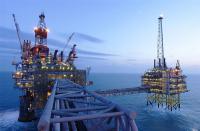
The Birmingham, U.K.-based Energy Technologies Institute (ETI) is seeking partners for a project to study the impact of removing brine from under-sea stores that could be used to store captured carbon. A previous ETI project in its Carbon Capture and Storage (CCS) technology program led to the development of the U.K. principal storage screening database, CO2Stored, which made a number of assumptions to estimate capacity and injectivity for each of the 550 stores off the U.K. coast. One of these was that brine can potentially be removed through a purpose built well or wells from the store to depressurize it, and can still retain the operation and integrity of the store.
-
-
Geoengineering technique would not stop sea level rise

Researchers used computer model experiments to test how the Greenland Ice Sheet would react to albedo modification, also called solar radiation management geoengineering, a proposed technology to cool down the Earth’s temperature by reflecting some sunlight away from the planet. They found the ice sheet might contribute to sea-level rise for decades to centuries after albedo modification began. The researchers say that albedo modification should not be counted on as a short-term solution to stop rising global sea levels.
-
-
Up to 30 percent less precipitation in the Central Andes in future
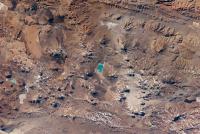
Seasonal water shortages already occur in the Central Andes of Peru and Bolivia. By the end of the century, precipitation could fall by up to 30 percent according to an international team of researchers. Researchers show that precipitation in the rainy season could drop noticeably - and this could happen within the next twenty years.
-
-
Warming-driven substantial glacier ice loss in Central Asia imperils water supplies
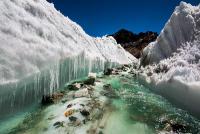
Central Asia is the outstanding case for human dependence on water seasonally delayed by glaciers. Nowhere the question about the glacier state is linked so closely to questions of water availability and, thus, food security. The glaciers in Central Asia, however, experience substantial losses in glacier mass and area. Along the Tien Shan, Central Asia’s largest mountain range, glaciers have lost 27 percent of their mass and 18 percent of their area during the last fifty years. Scientists estimate that almost 3,000 square kilometers of glaciers and an average of 5.4 gigatons of ice per year have been lost since the 1960s, saying that about half of Tien Shan’s glacier volume could be depleted by the 2050s.
-
-
Toxic blue-green algae a growing threat to nation’s drinking, recreational water
A new report concludes that blooms of toxic cyanobacteria, or blue-green algae, are a poorly monitored and underappreciated risk to recreational and drinking water quality in the United States, and may increasingly pose a global health threat. Several factors are contributing to the concern. Temperatures and carbon dioxide levels have risen, many rivers have been dammed worldwide, and wastewater nutrients or agricultural fertilizers in various situations can cause problems in rivers, lakes, and reservoirs.
-
-
Price of wind energy in U.S. at an all-time low, spurring demand
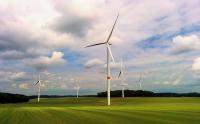
Wind energy pricing is at an all-time low, according to a new report released by the U.S. Department of Energy. The prices offered by wind projects to utility purchasers averaged under 2.5¢/kWh for projects negotiating contracts in 2014, spurring demand for wind energy.
-
-
If climate trends continue, Manhattan climate index will resemble Oklahoma City today
In a few decades, climate change caused by greenhouse gas emissions will alter the way that Americans heat and cool their homes. The number of days each year that heating and air conditioning are used will decrease in the Northern states, as winters get warmer, and increase in Southern states, as summers get hotter. In the future, the amount of heating and cooling required in New York City will be similar to that used in Oklahoma City today. By this same measure, Seattle is projected to resemble present day San Jose, and Denver to become more like Raleigh, North Carolina, is today.
-
-
Building resilient urban infrastructure to cope with climate challenges
In addition to urban flooding, global climate change is predicted to bring increased coastal flooding, like that associated with Hurricane Katrina and Superstorm Sandy, as well as extreme heat. As extreme weather events like these occur more frequently, global climate change may demand that we recalibrate our definition of “rare.” Historically, infrastructure to mitigate flooding and extreme heat has been designed to be fail-safe, meaning that it is designed to be fail-proof. But recently we have seen that fail-safe can be a dangerous illusion. Fifty researchers from different disciplines from fifteen institutions have teamed up to explore these challenges and to change the way we think about urban infrastructure.
-
-
Historic drought complicates firefighting in California
The twenty-one wild fires which have erupted in different parts of the state have already cost lives, dozens of homes, and millions of dollars in damages. To fight fires, firefighters need water – and although state water and fire officials say that, so far, there is no danger of running out of water, they are conscious of the state’s water predicament and they are trying to be more careful in the use of water. The persistent drought has forced crews to get creative, using more dirt and retardant on wildfires. Firefighting response to several blazes has been slowed down by the drought, because firefighting helicopters found it impossible to siphon water from lakes and ponds where water levels were lower than in previous years. In the past, property owners whose properties were threatened by fire, would allow firefighting crews to tap water on their property, and would then be compensated by cash reimbursements from the state. Now, many property owners demand instead that the state replenish the water used by firefighters to protect the owners’ property.
-
-
Pentagon: Climate change aggravates U.S. security risks
Global climate change will aggravate problems such as poverty, social tensions, environmental degradation, ineffectual leadership, and weak political institutions that threaten stability in a number of countries, according to a report the Defense Department sent to Congress last week. The report finds that climate change is a security risk, Pentagon officials said, because it degrades living conditions, human security, and the ability of governments to meet the basic needs of their populations.
-
- All
- Regional
- Water
- Biometrics
- Borders/Immig
- Business
- Cybersecurity
- Detection
- Disasters
- Government
- Infrastructure
- International
- Public health
- Public Safety
- Communication interoperabillity
- Emergency services
- Emergency medical services
- Fire
- First response
- IEDs
- Law Enforcement
- Law Enforcement Technology
- Military technology
- Nonlethal weapons
- Nuclear weapons
- Personal protection equipment
- Police
- Notification /alert systems
- Situational awareness
- Weapons systems
- Sci-Tech
- Sector Reports
- Surveillance
- Transportation
Advertising & Marketing: advertise@newswirepubs.com
Editorial: editor@newswirepubs.com
General: info@newswirepubs.com
2010-2011 © News Wire Publications, LLC News Wire Publications, LLC
220 Old Country Road | Suite 200 | Mineola | New York | 11501
Permissions and Policies
Editorial: editor@newswirepubs.com
General: info@newswirepubs.com
2010-2011 © News Wire Publications, LLC News Wire Publications, LLC
220 Old Country Road | Suite 200 | Mineola | New York | 11501
Permissions and Policies
